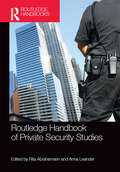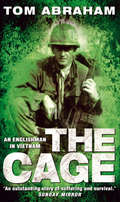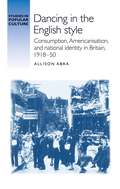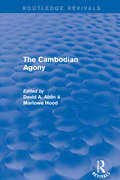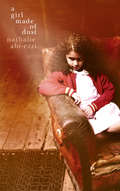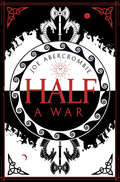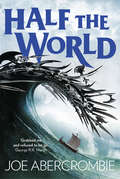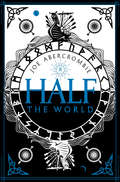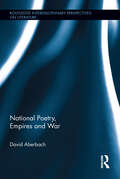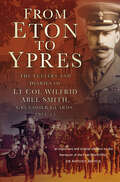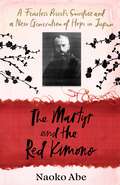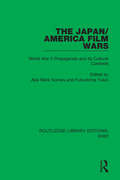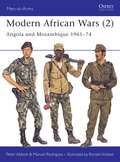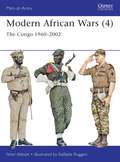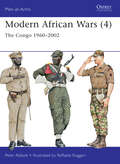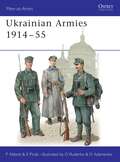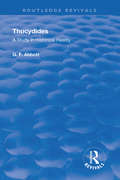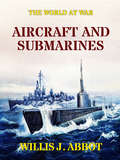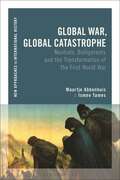- Table View
- List View
Routledge Handbook of Private Security Studies
by Rita Abrahamsen Anna LeanderThis new Handbook offers a comprehensive overview of current research on private security and military companies, comprising essays by leading scholars from around the world. The increasing privatization of security across the globe has been the subject of much debate and controversy, inciting fears of private warfare and even the collapse of the state. This volume provides the first comprehensive overview of the range of issues raised by contemporary security privatization, offering both a survey of the numerous roles performed by private actors and an analysis of their implications and effects. Ranging from the mundane to the spectacular, from secretive intelligence gathering and neighbourhood surveillance to piracy control and warfare, this Handbook shows how private actors are involved in both domestic and international security provision and governance. It places this involvement in historical perspective, and demonstrates how the impact of security privatization goes well beyond the security field to influence diverse social, economic and political relationships and institutions. Finally, this volume analyses the evolving regulation of the global private security sector. Seeking to overcome the disciplinary boundaries that have plagued the study of private security, the Handbook promotes an interdisciplinary approach and contains contributions from a range of disciplines, including international relations, politics, criminology, law, sociology, geography and anthropology. This book will be of much interest to students of private security companies, global governance, military studies, security studies and IR in general.
The Cage
by Tom AbrahamTom 'Bud' Abraham was one of the very few Englishmen to serve in Vietnam. As an officer in the 1st Cavalry Division during 1967/8, he saw combat in some of the fiercest encounters of the war. His gallantry earned him a chestful of medals, including the Silver Star, one of the highest decorations awarded by the American Army.During the Tet Offensive, Tom was captured by the Vietcong. The suffering he endured during his interrogation and torture tested him to the limits, and yet his daring escape into the surrounding jungle was the beginning of a new ordeal. His struggle to survive, naked and alone, would drag him down to the level of a primitive beast. After he returned to England from Vietnam, Tom made a new life. He married, became a father, and started a successful career in business. It seemed that he had forgotten the nightmare of the past. But more than thirty years later, a trivial encounter with the police began a catastrophic chain of events. He lost everything - his family, his home, his self-respect. It became all too obvious that the psychological and emotional wounds he received in Vietnam were still festering. In trying to rebuild his life, Tom had once more to confront those traumatic memories that he had buried so deep. If he were to have any chance of a future, he would have to relive the past. His terrifying yet inspiring journey is the story of this book.
Dancing in the English style: Consumption, Americanisation and national identity in Britain, 1918–50 (Studies in Popular Culture)
by Allison AbraThis book illuminates the history of popular dance, one of the most influential and widespread leisure practices in early twentieth-century Britain. It focuses in particular on the relationship between dancing and national identity construction, in a period when Britain participated in increasingly global markets of popular cultural production, consumption, and exchange.
Dancing in the English style: Consumption, Americanisation and national identity in Britain, 1918–50 (Studies in Popular Culture)
by Allison AbraThis book illuminates the history of popular dance, one of the most influential and widespread leisure practices in early twentieth-century Britain. It focuses in particular on the relationship between dancing and national identity construction, in a period when Britain participated in increasingly global markets of popular cultural production, consumption, and exchange.
Revival: The Cambodian Agony (1990)
by David A. Ablin M. HoodThis title was first published in 1990: Cambodia, it has been said, has gone through the most radical social upheaval and transformation of any country in recorded history. From the overthrow of Prince Sihanouk, who ruled for 29 year, in 1970 to the victory of the Cambodian Communist Party in 1975, Cambodia suffered massive saturation bombing and an unusually violent civil war. It is estimated that half a million people of the seven million total population died. From 1975 to the end 1978 as many as another three million perished because of the brutal policies of the government, and spurred the civil war that has been simmering ever since. In this book, the world's leading experts on Cambodia and the politics of Indochina address the major issues facing Cambodia since the overthrow of the Pol Pot regime in 1978.
Revival: The Cambodian Agony (1990)
by David A. Ablin M. HoodThis title was first published in 1990: Cambodia, it has been said, has gone through the most radical social upheaval and transformation of any country in recorded history. From the overthrow of Prince Sihanouk, who ruled for 29 year, in 1970 to the victory of the Cambodian Communist Party in 1975, Cambodia suffered massive saturation bombing and an unusually violent civil war. It is estimated that half a million people of the seven million total population died. From 1975 to the end 1978 as many as another three million perished because of the brutal policies of the government, and spurred the civil war that has been simmering ever since. In this book, the world's leading experts on Cambodia and the politics of Indochina address the major issues facing Cambodia since the overthrow of the Pol Pot regime in 1978.
A Girl Made of Dust
by Nathalie Abi-EzziA rich and beautiful novel set during the Israeli invasion of Lebanon in the early 1980s, and based on the author's personal experiences of the conflict.
Half a War: Half A King, Half The World, Half A War (Shattered Sea #3)
by Joe AbercrombieA classic coming-of-age tale set in a vivid and richly-imagined world from Sunday Times bestselling author Joe Abercrombie. ‘Joe Abercrombie is doing some terrific work’ GEORGE R.R. MARTIN
Half the World: Half A King, Half The World, Half A War (Shattered Sea #2)
by Joe Abercrombie‘Grabbed me and refused to let go’ George R.R. Martin
Half the World: Half A King, Half The World, Half A War (Shattered Sea #2)
by Joe Abercrombie‘Grabbed me and refused to let go’ George R.R. Martin
National Poetry, Empires and War (Routledge Interdisciplinary Perspectives on Literature)
by David AberbachNationalism has given the world a genre of poetry bright with ideals of justice, freedom and the brotherhood of man, but also, at times, burning with humiliation and grievance, hatred and lust for revenge, driving human kind, as the Austrian poet Grillparzer put it, ‘From humanity via nationality to bestiality’. National Poetry, Empires and War considers national poetry, and its glorification of war, from ancient to modern times, in a series of historical, social and political perspectives. Starting with the Hebrew Bible and Homer and moving through the Crusades and examples of subsequent empires, this book has much on pre-modern national poetry but focuses chiefly on post-1789 poetry which emerged from the weakening and collapse of empires, as the idealistic liberalism of nationalism in the age of Byron, Whitman, D’Annunzio, Yeats, Bialik, and Kipling was replaced by darker purposes culminating in World War I and the rise of fascism. Many national poets are the subject of countless critical and biographical studies, but this book aims to give a panoramic view of national poetry as a whole. It will be of great interest to any scholars of nationalism, Jewish Studies, history, comparative literature, and general cultural studies.
National Poetry, Empires and War (Routledge Interdisciplinary Perspectives on Literature)
by David AberbachNationalism has given the world a genre of poetry bright with ideals of justice, freedom and the brotherhood of man, but also, at times, burning with humiliation and grievance, hatred and lust for revenge, driving human kind, as the Austrian poet Grillparzer put it, ‘From humanity via nationality to bestiality’. National Poetry, Empires and War considers national poetry, and its glorification of war, from ancient to modern times, in a series of historical, social and political perspectives. Starting with the Hebrew Bible and Homer and moving through the Crusades and examples of subsequent empires, this book has much on pre-modern national poetry but focuses chiefly on post-1789 poetry which emerged from the weakening and collapse of empires, as the idealistic liberalism of nationalism in the age of Byron, Whitman, D’Annunzio, Yeats, Bialik, and Kipling was replaced by darker purposes culminating in World War I and the rise of fascism. Many national poets are the subject of countless critical and biographical studies, but this book aims to give a panoramic view of national poetry as a whole. It will be of great interest to any scholars of nationalism, Jewish Studies, history, comparative literature, and general cultural studies.
From Eton To Ypres: The Letters And Diaries Of Lt Col Wilfrid Abel Smith, Grenadier Guards, 1914-15
by Charles Abel SmithRegarded as one of the most outstanding commanding officers on the Western Front, Wilfrid Abel Smith commanded an elite unit of 1,000 of the finest soldiers in the British Army. Educated at Eton and Sandhurst, Smith was a career soldier who led his battalion of Grenadiers with distinction through the First Battle of Ypres and the winter trench warfare of 1914–15. He died of wounds received at the Battle of Festubert in May 1915. The letters and diaries provide a vivid, first-hand account of the fighting and suffering on the front line, written by a compassionate commander and affectionate family man. Most of his brother officers were Old Etonians, including his brigade commander, Lord Cavan, and his second-in-command, George ‘Ma’ Jeffreys. Smith’s account offers a poignant insight into the way in which the privileged world of a Guards officer responded, with the highest sense of duty and courage, to the unprecedented demands of industrial warfare. From Eton to Ypres is edited by his great-grandson, Charles Abel Smith.
The Martyr and the Red Kimono: A Fearless Priest’s Sacrifice and A New Generation of Hope in Japan
by Naoko AbeThe remarkable true story of Saint Maximilian Kolbe, and the two men in war-torn Japan whose lives he changed forever.On the 14th of August 1941, a Polish priest named Maximilian Maria Kolbe was murdered in Auschwitz.Kolbe's life had been remarkable. Fiercely intelligent and driven, he founded a movement of Catholicism and spent several years in Nagasaki, ministering to the 'hidden Christians' who had emerged after centuries of oppression. A Polish nationalist as well as a priest, he gave sanctuary to fleeing refugees and ran Poland's largest publishing operation, drawing the wrath of the Nazis. His death was no less remarkable: he volunteered to die, saving the life of a fellow prisoner.It was an act that profoundly transformed the lives of two Japanese men. Tomei Ozaki was just seventeen when the US dropped an atomic bomb on Nagasaki, destroying his home and his family. Masatoshi Asari worked on a farm in Hokkaido during the war and was haunted by the inhumane treatment of prisoners in a nearby camp. Forged in the crucible of an unforgiving war, both men drew inspiration from Kolbe's sacrifice, dedicating their lives to humanity and justice. Ozaki followed in his footsteps and became a friar. Asari created cherry trees as peace offerings.In The Martyr and the Red Kimono, award-winning author Naoko Abe weaves together a deeply moving and inspirational true story of resistance, sacrifice, guilt and atonement.
The Japan/America Film Wars: World War II Propaganda and its Cultural Contexts (Routledge Library Editions: WW2 #15)
by Abé Mark Nornes and Fukushima YukioWith contributions from noted critics and film historians from both countries, this book, first published in 1994, examines some of the most innovative and disturbing propaganda ever created. It analyses the conflicting images of these films and their effectiveness in defining public perception of the enemy. It also offers pointed commentary on the power of visual imagery to enhance racial tensions and enforce both positive and negative stereotypes of the Other.
Modern African Wars: Angola and Mozambique 1961–74 (Men-at-Arms)
by Peter Abbott Ronald VolstadPortugal was both the first and the last of the great European colonial powers. For 500 years Portugal had colonies in Africa. In 1960, as liberation movements swept across colonial Africa, the Portuguese flag still flew over vast expanses of territory across the continent. The spread of decolonization and the establishment of independent states whose governments were sympathetic to the cause of African nationalism led, in the early 1960s, to a series of wars in Angola, Guiné and Mozambique. This book details each of these liberation movements, focusing on the equipment, uniforms and organization of the Portuguese forces.
Modern African Wars: The Congo 1960–2002 (Men-at-Arms)
by Peter Abbott Raffaele RuggeriIn the 1970s, during the ruinous 30-year dictatorship of General Mobutu, periodic rebellions required the hasty insertion once again of Belgian and French paratroops to save European lives. From the mid-1990s the country split again, becoming the battleground for the largest African war in history, as armies and rebel groups from Rwanda, Angola, Zimbabwe, Uganda, Namibia and other countries crossed into the Congo to support one side or the other, or simply to loot the rich resources. Major operations ended – or paused – in 2002, but the old hatreds and constant lure of the Congo's natural resources continue to boil over into periodic outbreaks. Featuring specially commissioned full-colour artwork and rare photographs, this is the harrowing story of the wars that ravaged the Congo for four decades.
Modern African Wars: The Congo 1960–2002 (Men-at-Arms #492)
by Peter Abbott Raffaele RuggeriIn the 1970s, during the ruinous 30-year dictatorship of General Mobutu, periodic rebellions required the hasty insertion once again of Belgian and French paratroops to save European lives. From the mid-1990s the country split again, becoming the battleground for the largest African war in history, as armies and rebel groups from Rwanda, Angola, Zimbabwe, Uganda, Namibia and other countries crossed into the Congo to support one side or the other, or simply to loot the rich resources. Major operations ended – or paused – in 2002, but the old hatreds and constant lure of the Congo's natural resources continue to boil over into periodic outbreaks. Featuring specially commissioned full-colour artwork and rare photographs, this is the harrowing story of the wars that ravaged the Congo for four decades.
Ukrainian Armies 1914–55 (Men-at-Arms)
by Peter Abbott Oleksiy Rudenko Eugene PinakThere can be no region in Europe whose history has been more tortured than Ukraine. During the 20th century Austria, Poland, Russia, Germany, Hungary, Czechoslovakia and Romania vied for power over parts of this vast and fragmented area; and its divided peoples rose time and again in vain attempts to win their independence. For the first time in the West, this book gives a succinct summary of all the different armed forces raised among the Ukrainians, and of their uniforms and insignia. These are illustrated in colour and in a selection of extremely rare photographs, dating from the Great War to the aftermath of World War II, when Ukrainian guerrillas continued to defy the Soviet authorities until the mid-1950s.
Ukrainian Armies 1914–55 (Men-at-Arms #412)
by Peter Abbott Eugene PinakThere can be no region in Europe whose history has been more tortured than Ukraine. During the 20th century Austria, Poland, Russia, Germany, Hungary, Czechoslovakia and Romania vied for power over parts of this vast and fragmented area; and its divided peoples rose time and again in vain attempts to win their independence. For the first time in the West, this book gives a succinct summary of all the different armed forces raised among the Ukrainians, and of their uniforms and insignia. These are illustrated in colour and in a selection of extremely rare photographs, dating from the Great War to the aftermath of World War II, when Ukrainian guerrillas continued to defy the Soviet authorities until the mid-1950s.
Thucydides: A Study in Historical Reality (Routledge Revivals)
by G.F. AbbottFirst published in 1925, this thoughtful volume constitutes an excellent English introduction to one of the great ancient historians. Originating from its author’s re-reading of Thucydides during World War I, it sought to place Thucydides not as the production of a remote world, but instead of one instilled with present life and reality. Dealing especially well with Thucydides’ method as a historian, this volume focuses less on military aspects and more on Thucydides’ approach to foreign policy, democracy, imperialism and the struggle for power.
Thucydides: A Study in Historical Reality (Routledge Revivals)
by G.F. AbbottFirst published in 1925, this thoughtful volume constitutes an excellent English introduction to one of the great ancient historians. Originating from its author’s re-reading of Thucydides during World War I, it sought to place Thucydides not as the production of a remote world, but instead of one instilled with present life and reality. Dealing especially well with Thucydides’ method as a historian, this volume focuses less on military aspects and more on Thucydides’ approach to foreign policy, democracy, imperialism and the struggle for power.
Aircraft and Submarines: The Story Of The Invention, Development, And Present-day Uses Of War's Newest Weapons (classic Reprint) (The World At War)
by Willis J. Abbot(Excerpt) "Not since gunpowder was first employed in warfare has so revolutionary a contribution to the science of slaughtering men been made as by the perfection of aircraft and submarines. The former have had their first employment in this world-wide war of the nations. The latter, though in the experimental stage as far back as the American Revolution, have in this bitter contest been for the first time brought to so practical a stage of development as to exert a really appreciable influence on the outcome of the struggle."
Global War, Global Catastrophe: Neutrals, Belligerents and the Transformations of the First World War (New Approaches to International History)
by Maartje Abbenhuis Ismee TamesGlobal War, Global Catastrophe presents a history of the First World War as an all-consuming industrial war that forcibly reshaped the international environment and, with it, impacted the futures of all the world's people. Narrated chronologically, the authors identify key themes and moments that radicalized the war's conduct and globalized its impact, affecting neutral and belligerent societies alike. These include Germany's invasion of Belgium and Britain's declaration of war in 1914, the expansion of economic warfare in 1915, anti-imperial resistance, the Russian revolutions of 1917 and the United States' entry into the war. Each chapter explains how individuals, communities, nation-states and empires experienced, considered and behaved in relationship to the conflict as it evolved into a total global war. Above all, the book argues that only by integrating the history of neutral and subject communities can we fully understand what made the First World War such a globally transformative event. This book offers an accessible and readable overview of the major trajectories of the global history of the conflict. It offers an innovative history of the First World War and an important alternative to existing belligerent-centric studies.
Global War, Global Catastrophe: Neutrals, Belligerents and the Transformations of the First World War (New Approaches to International History)
by Maartje Abbenhuis Ismee TamesGlobal War, Global Catastrophe presents a history of the First World War as an all-consuming industrial war that forcibly reshaped the international environment and, with it, impacted the futures of all the world's people. Narrated chronologically, the authors identify key themes and moments that radicalized the war's conduct and globalized its impact, affecting neutral and belligerent societies alike. These include Germany's invasion of Belgium and Britain's declaration of war in 1914, the expansion of economic warfare in 1915, anti-imperial resistance, the Russian revolutions of 1917 and the United States' entry into the war. Each chapter explains how individuals, communities, nation-states and empires experienced, considered and behaved in relationship to the conflict as it evolved into a total global war. Above all, the book argues that only by integrating the history of neutral and subject communities can we fully understand what made the First World War such a globally transformative event. This book offers an accessible and readable overview of the major trajectories of the global history of the conflict. It offers an innovative history of the First World War and an important alternative to existing belligerent-centric studies.
